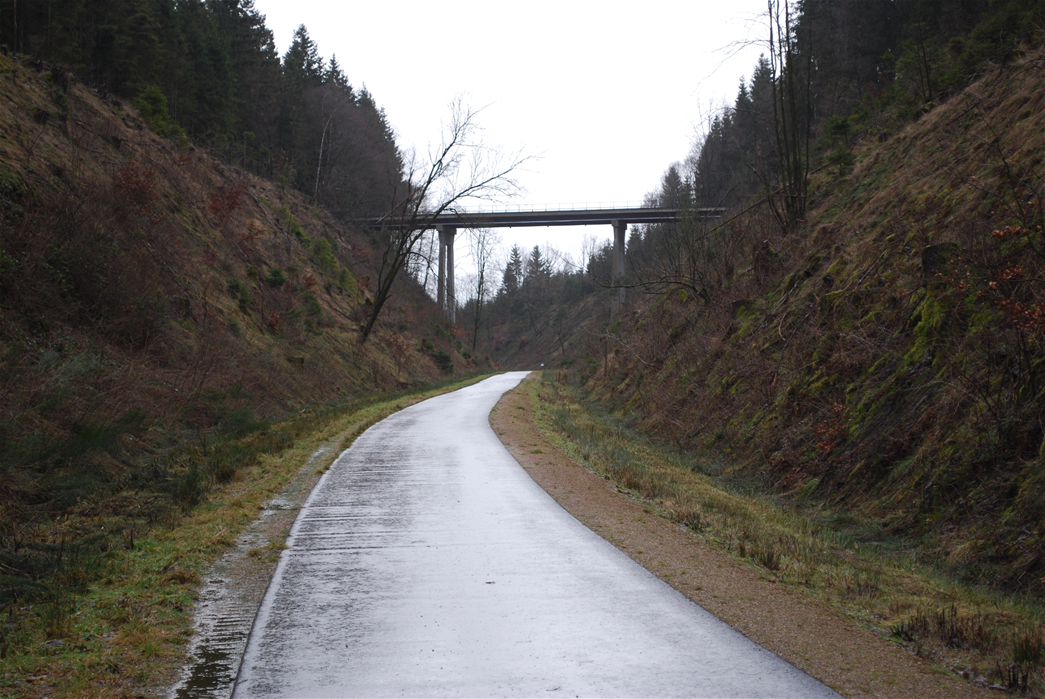For example, if you travel along the old Westeifelbahn from Prüm via Pronsfeld (opened in 1886) and then from Pronsfeld to Sankt Vith (opened in 1888), you can see how the line follows a valley from Prüm via Pronsfeld to Bleialf. There was no need to dig shafts, build dams or construct bridges. The construction of this railway was quick and cheap.
After the turn of the century, the situation was very different. The German Empire was preparing for a possible war. The so-called hereditary enemy, France, was to be attacked from Belgium. The German army therefore needed new railway lines to transport hundreds of thousands of soldiers from the east directly to the German-Belgian border. The cost of construction was probably not an issue. The benefits to the German economy were extremely small.
The best example of this mad rearmament is the Lanzerath pit. Today it is crossed by the regional road from Losheimergraben to Manderfeld. The bridge there has a span of about 60 metres and the shaft at the bottom is about 10 metres wide. The bridge is 23 metres high. The whole shaft is about 550 metres long.
To build the shaft, some 235,000 cubic metres of earth had to be excavated and backfilled elsewhere. It would take around 11,750 articulated dump lorries (so-called 40-tonne lorries with a load capacity of 20 cubic metres) to move this excavated material today. All these lorries lined up together would cover a distance of about 176 km, the distance from Lanzerath to Brussels or Dortmund. Even today and with the most modern machinery, this project would be a major construction site.
This was probably even more true for the years of construction before 1912. Not until 1900 did companies in Germany make increasing use of machines (such as dipper dredgers) in railway construction as the labour costs for manual labour were too cheap before (1). Therefore, I assume that some of the work was done with simple machines, but a significant part was still done by hand.
Today, thanks to the network of cycle paths, it is possible to see once again that this inconspicuous shaft is a forgotten monument to the madness of rearmament and war. This madness continues today. In 2016, global military spending amounted to around 1.69 trillion US dollars. In the same year, according to the OECD’s Development Assistance Committee (DAC), all the countries in the world combined spent about $142.6 billion on development aid. This is 11.8 per cent of military spending.
Carlo Lejeune
(1): W. Hoyer, 3rd volume: Unterbau, in Robert Otzen, Handbibliothek für Bauingenieure, II. Teil: Eisenbahnwesen und Städtebau, Berlin 1923, p. 31.

